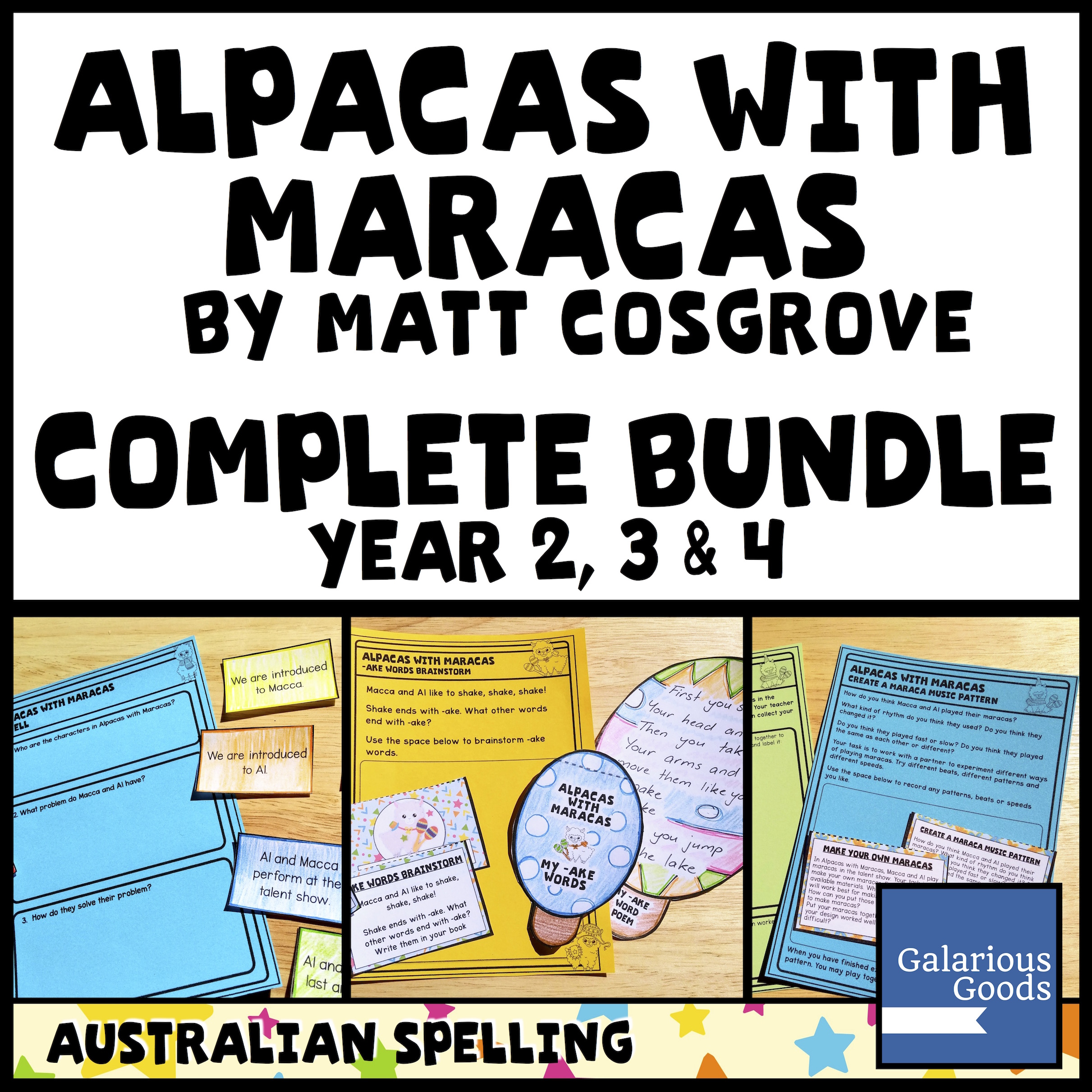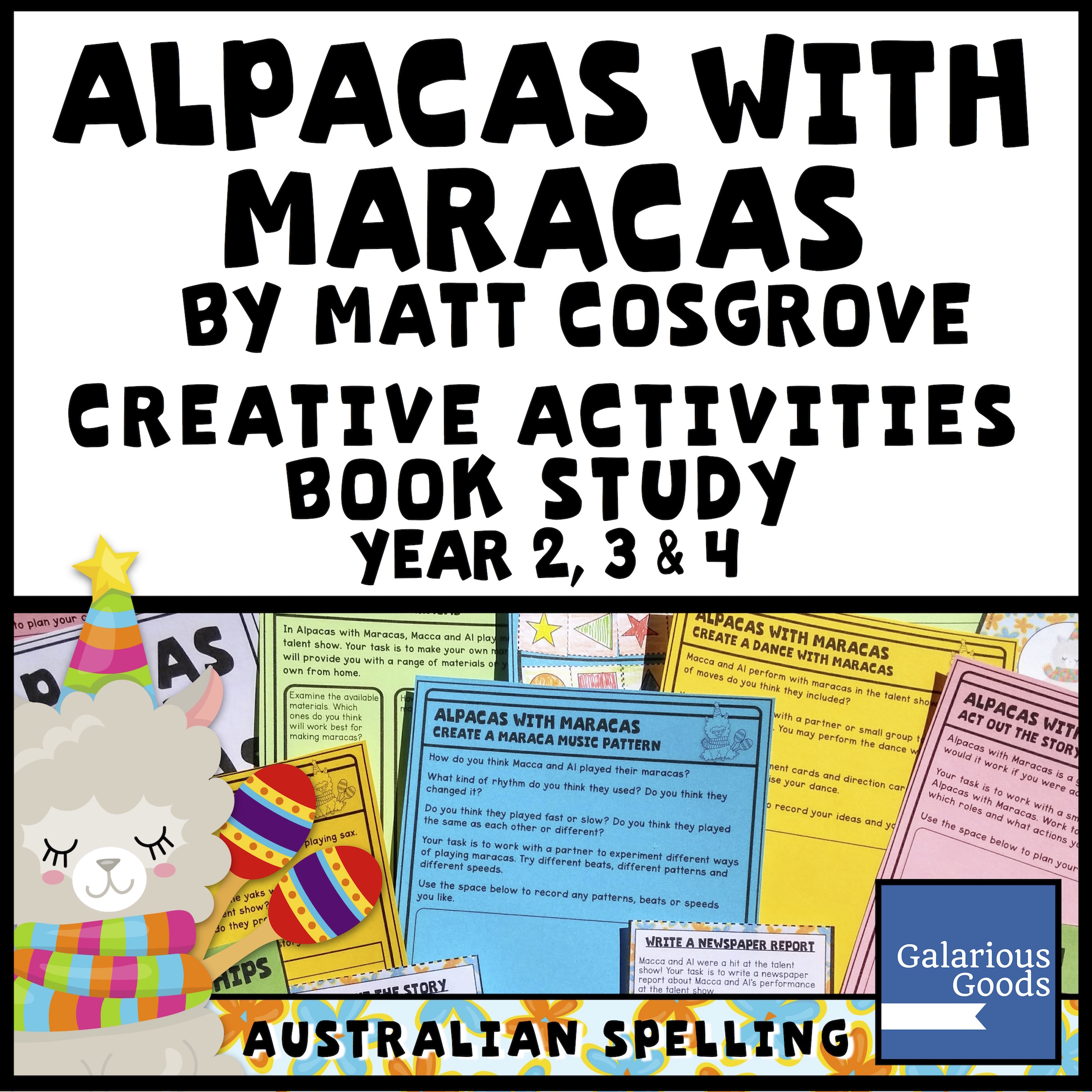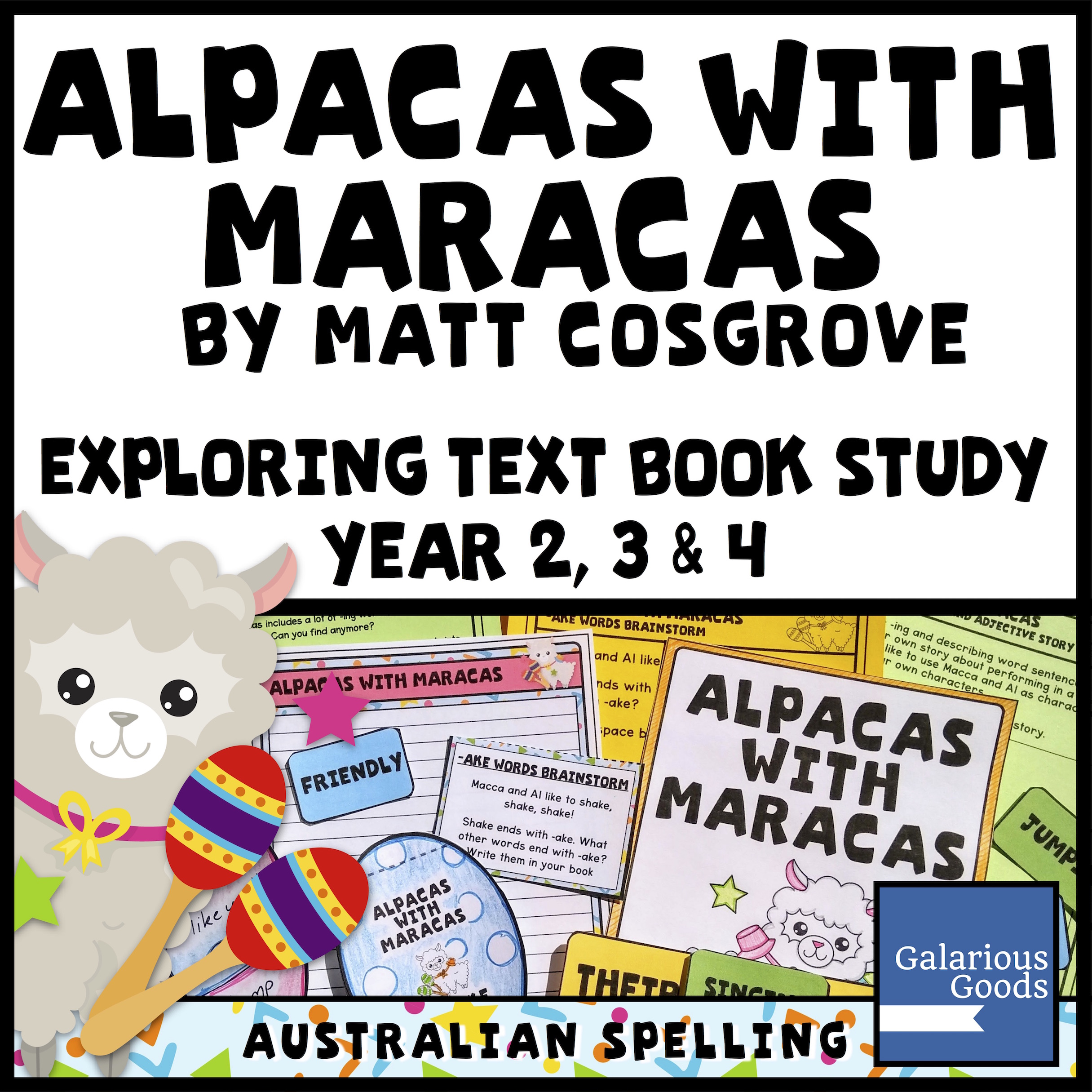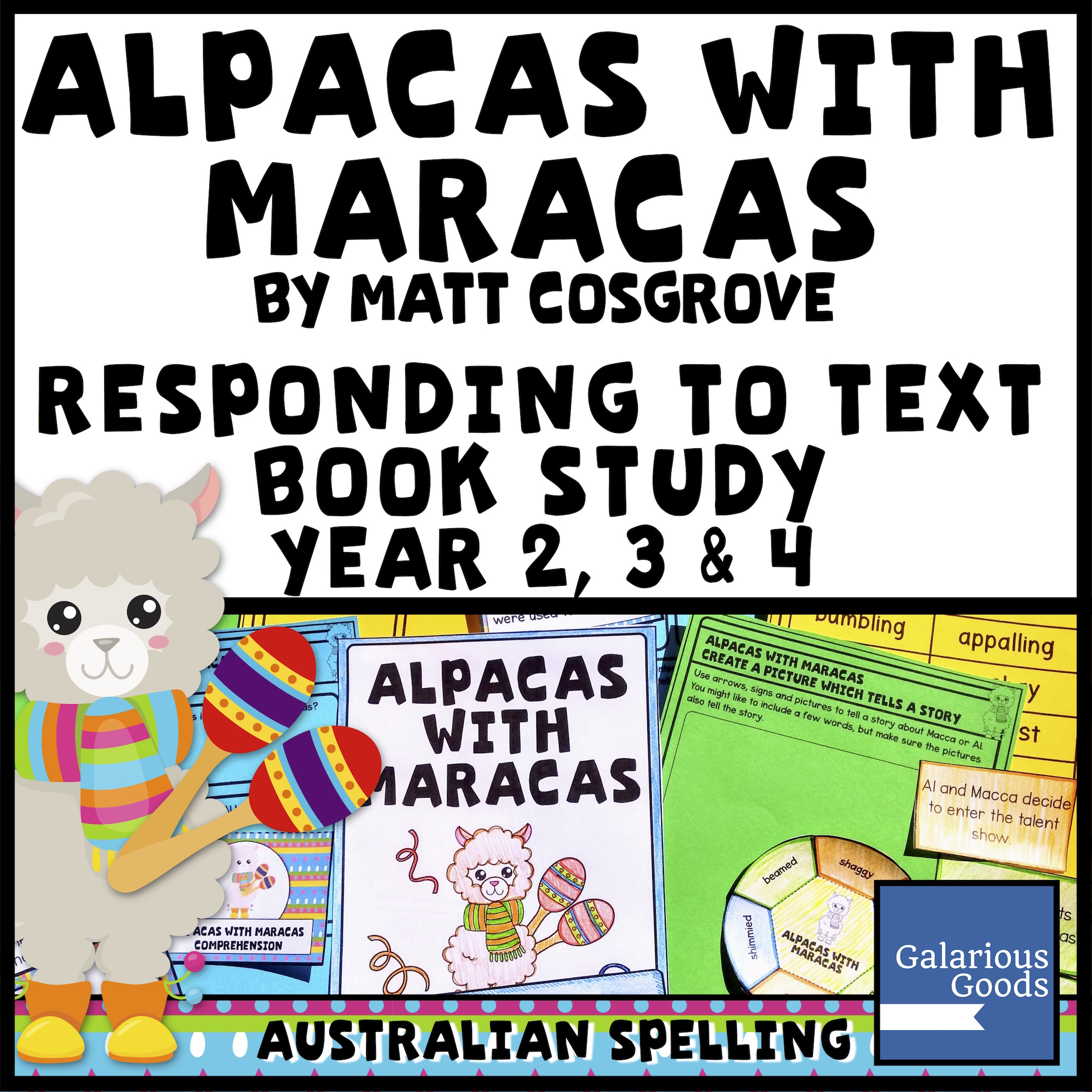3 Easy Ways to Explore Alpacas with Maracas
/Alpacas with Maracas by Matt Cosgrove is a book packed with great language and enticing pictures - making it perfect to read to an audience. It’s no surprise that it was chosen as the 2019 National Simultaneous Storytime book, and it’s sure to be a classroom read aloud staple for years to come.
But what else can you do with this great book? And what can you do if you’ve only got limited time and resources to explore it? Here’s three easy ways to explore Alpacas with Maracas when it’s your classroom read aloud book.
1. Make Dance Patterns with Maracas
The whole book Alpacas with Maracas is an invitation to get up and dance. While maracas are perfect for this, any shaking percussion tool - from bells to shakers to dried beans in containers - will also allow students to explore the patterns in movement and rhythm.
Students can start with a good old fashioned dance party. Once you’ve read the book, you can invite the students to move like Macca and Al, shaking their musical instruments and getting their groove and move on. You can follow this up with talking about how dancing makes you feel and why people might dance.
Students can also explore shaking to a beat. You can clap out a rhythm for students to follow, explore 4/4 time, explore what happens if you skip a beat or play with different groups of students playing at different times in different parts of the room. Your school music teacher may be able to help you come up with some interesting patterns to explore as well!
Finally students can explore making dance patterns by moving their maracas in different ways. Students can move their maracas (or shakers or bells) up and down, diagonally, to the left and right and in front of them. How can they use these directions to make up a dance routine? And how could they write it down or draw it for other students to follow?
2. Explore the Vivid Verbs of Alpacas with Maracas
Alpacas with Maracas is FILLED with wonderful words including some lovely verbs. Students can find the verbs throughout the text, using them to create a poster of great words. They can also act out the verbs that they find, working in small groups to share them.
Another way to explore verbs is to look for synonyms for some of the verbs in the book. Students might like to start with an easy verb like dance and see if they can brainstorm as many synonyms as possible. You can display these brainstorms in the classroom for students to refer back to in the future.
Students can also use the lovely language of Alpacas with Maracas to create their own stories. It might be a continuation of the story of Al and Macca or their own creation.
3. Reflect on the Character Lessons
There’s some lovely character lessons in Alpacas with Maracas, perfect little ideas for students to reflect and build on.
Al and Macca are great friends - they work together, they complement each other and they look for ways to find happiness together. This is a wonderful lesson for students to reflect on, thinking about what makes a good friend and what good friendships look like.
Macca and Al are also persistent They try so many different talents when they’re looking for the right talent for the show. Even when they fail - and they fail quite spectacularly - they get back up to try again. This can lead to a wonderful discussion about persistence and what it can look like when we’re persistent at something which is difficult. We can also talk about trying different approaches to reach a goal - Macca and Al have a goal of being in a talent show, but they need to try different approaches to make it in there.
Macca and Al are also great losers in Alpacas with Maracas. They are the perfect representatives of ‘it doesn’t matter if you lose as long as you give it a try’. Students can discuss what it feels like to lose at something and what a good loser looks like. They might even like to role play some ways to be a good loser.


















